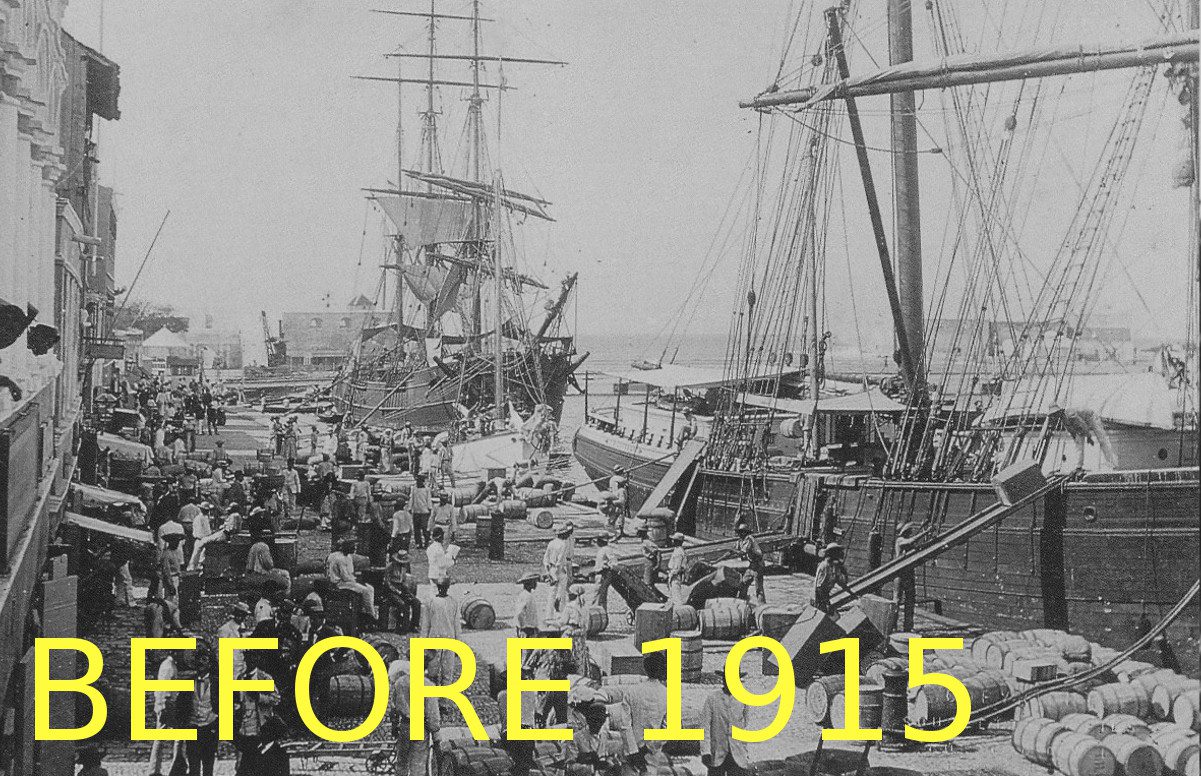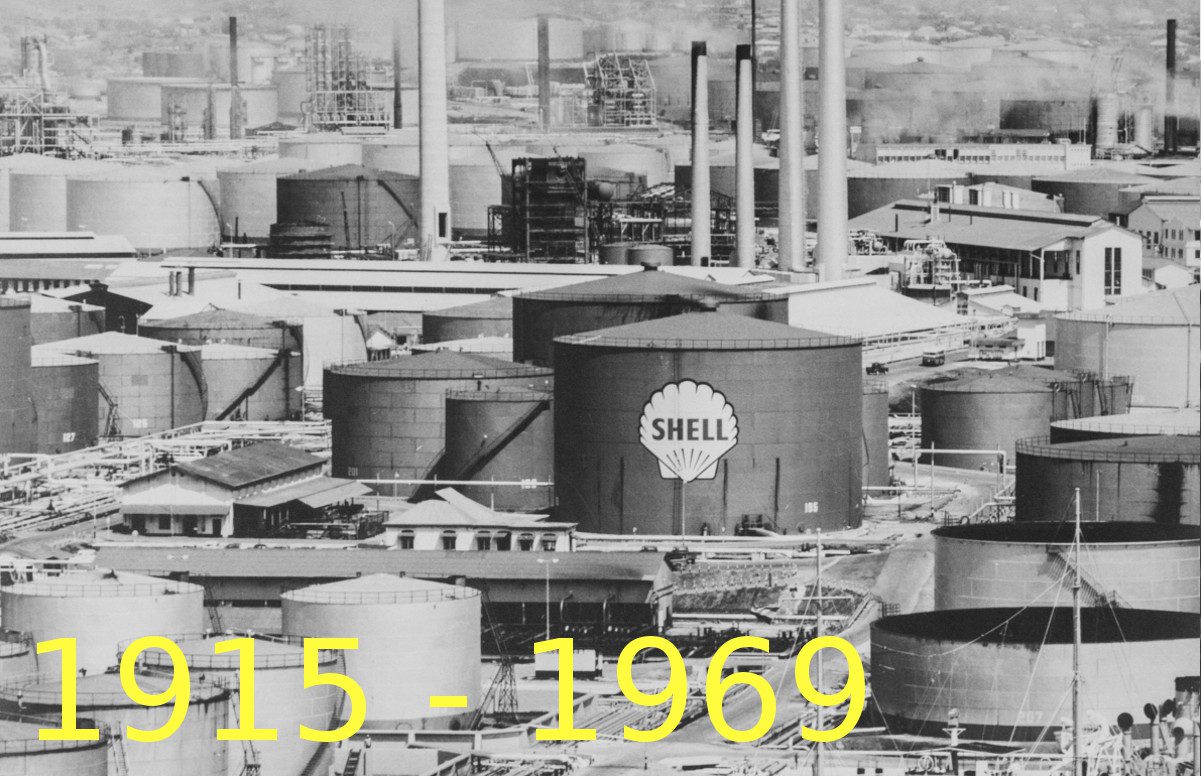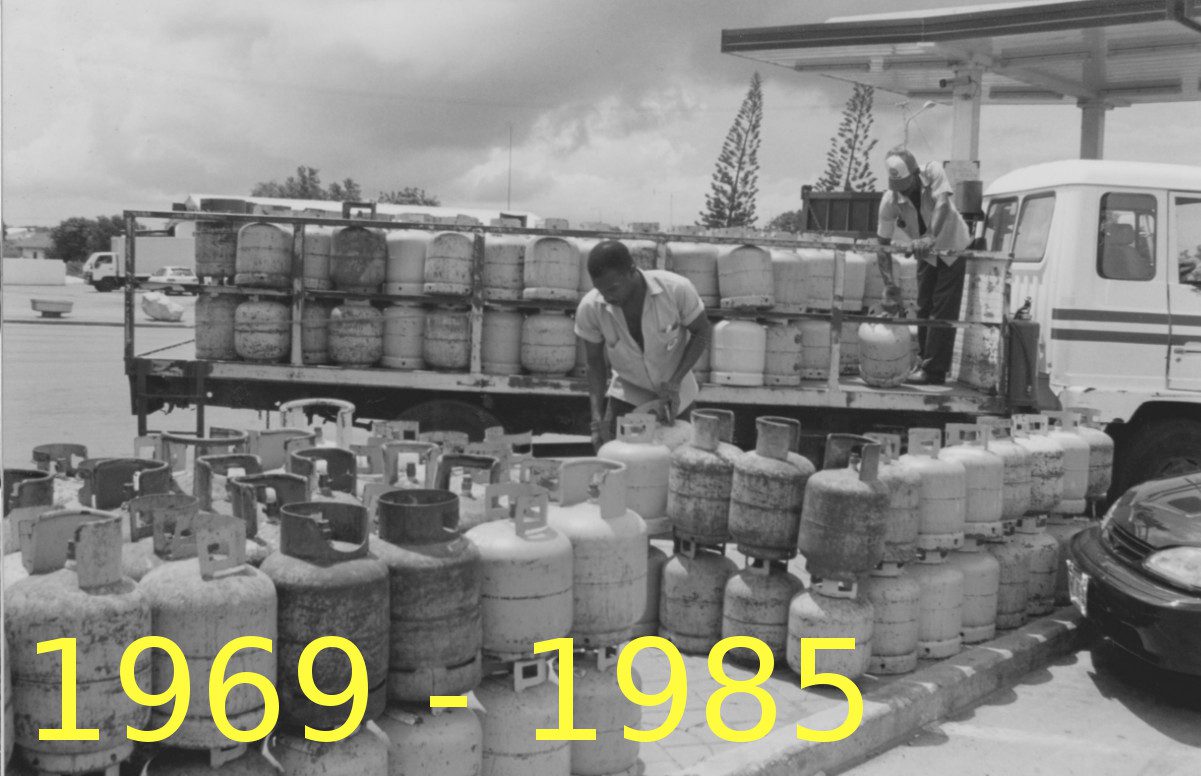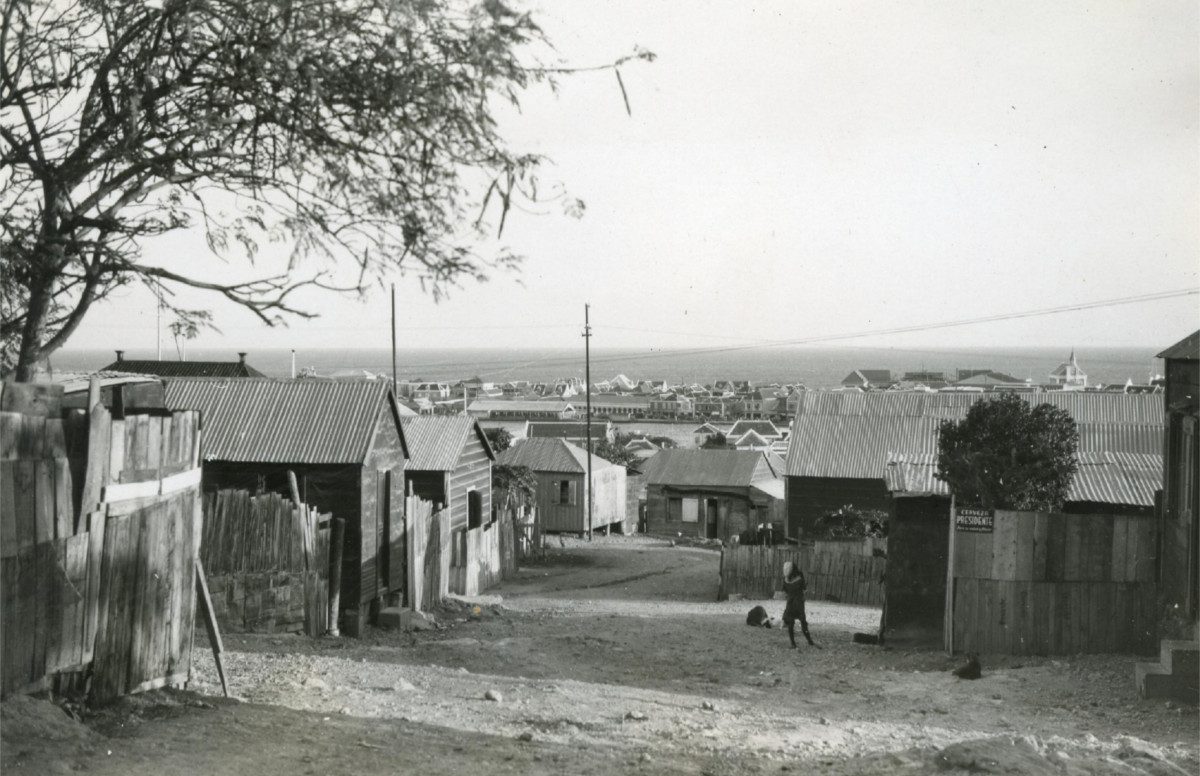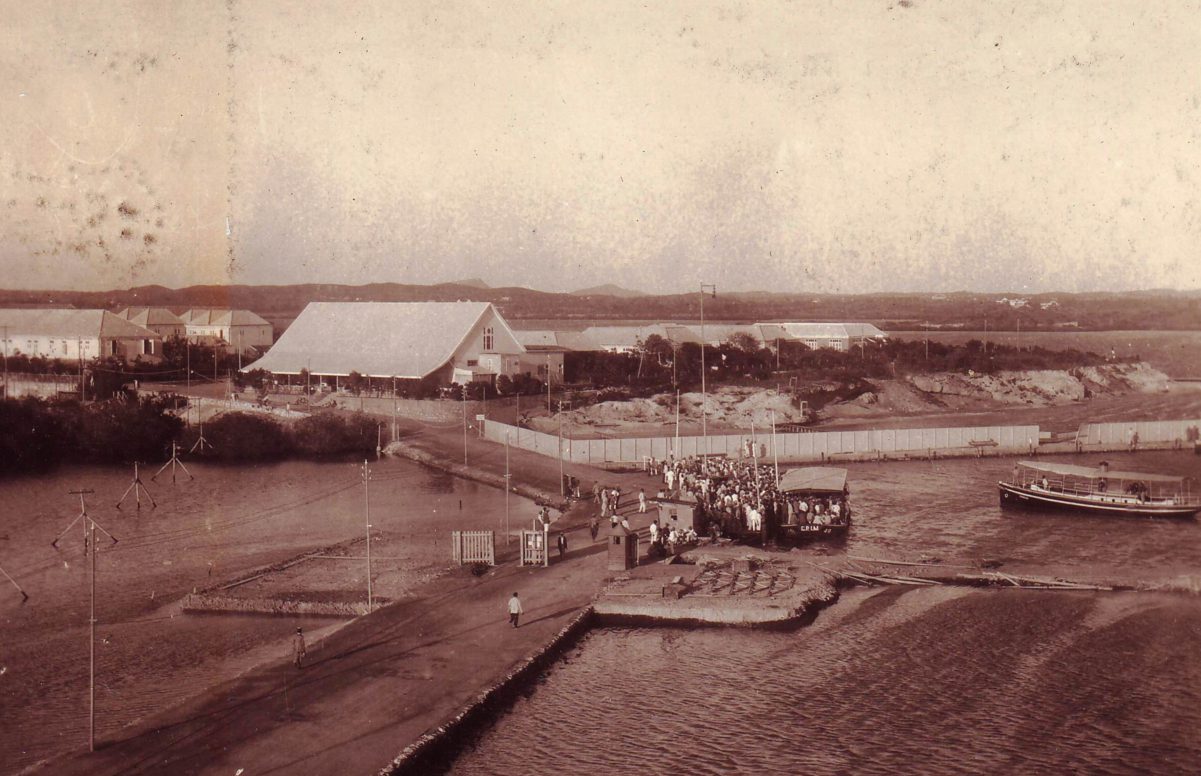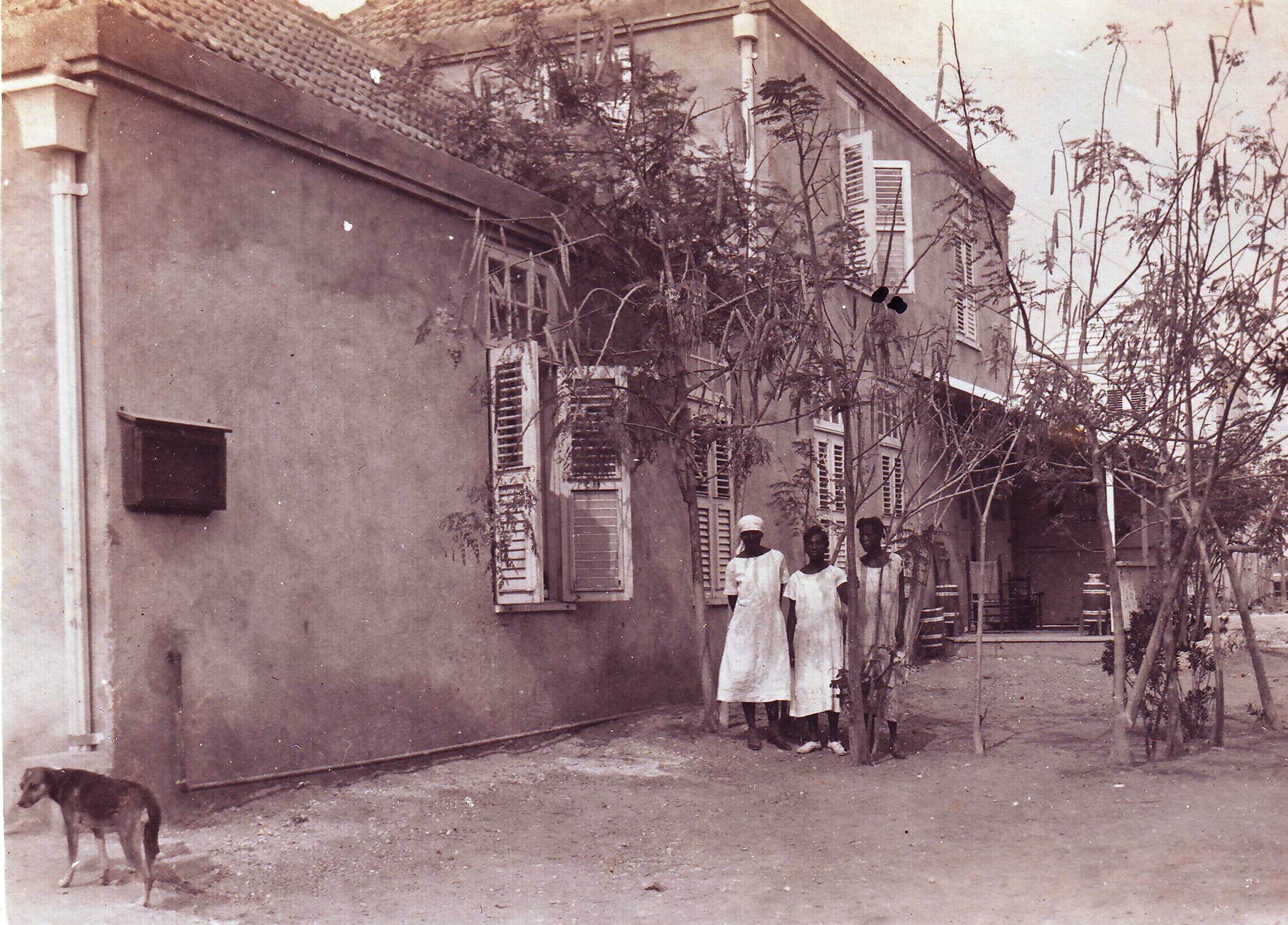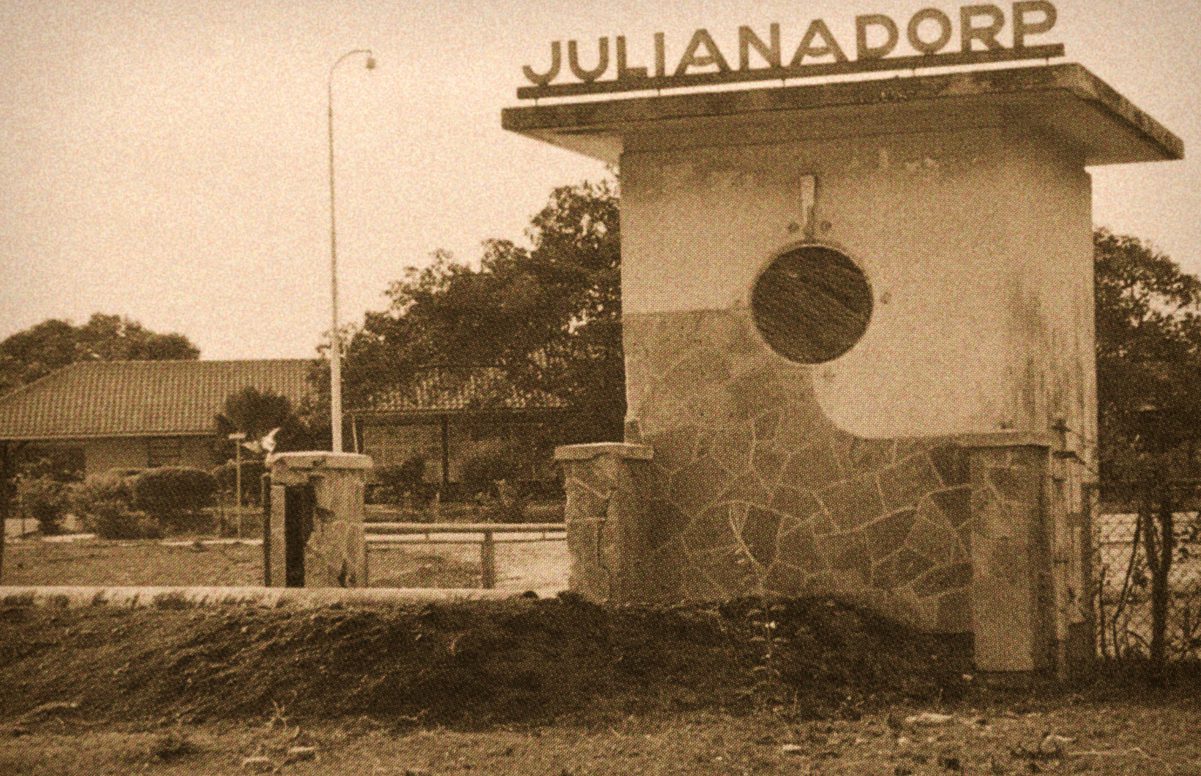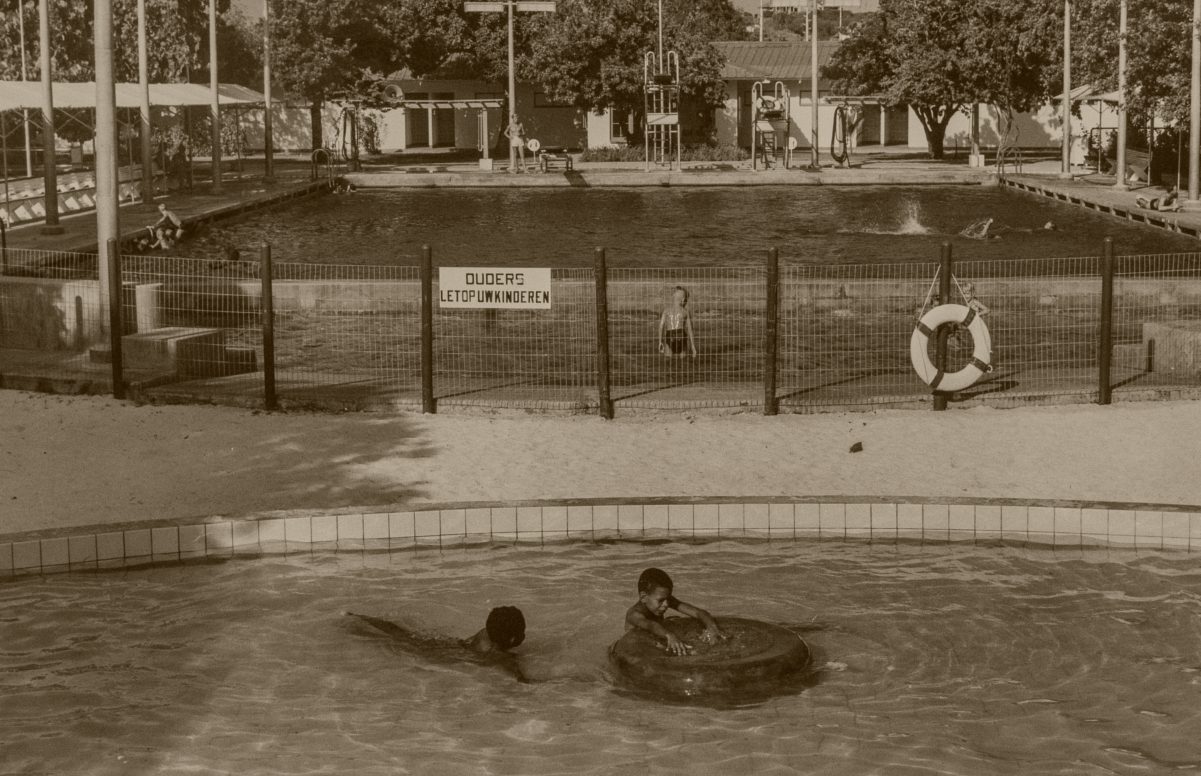
Isla den Nos Bida
100 years Refinery in Curaçao – 100 aña Refineria na Kòrsou
Exhibition
1915 – 1969
In the beginning, Dutch personnel lived on Negropont island, smack in the middle of Schottegat. The island was connected to the Isla refinery complex by a 150 meter dam and two ferries shuttled the CPM-personnel to town. These ferries were divided into a front and back compartment, where the back part was designated for European employees, while the front part served the mostly colored local employees and foreign contract laborers. Sitting in the front, the backwater would spray their faces, while Dutch employees remained dry in the back of the boat.
To house the many Dutch migrants arriving to work at the plant, Negropont must have been close to a permanent construction zone in the 1920s. By 1923 the European living community on Negropont consisted of some 12 houses and a special club area for management and high level employees. During the first period of expansion, from 1923 to 1930, new living quarters for European employees were built. During this time a new type of house was introduced on Curaçao; the portiek-etagewoning, a copy of the type of two or three story apartment building popular in the Netherlands at the time. But even building upwards, no more than 200 families could be housed on Negropont at any time. Negropont also boasted two bachelor hotels, a lodge for long term guests, a medical clinic, an elementary school, a swimming pool and a special residence for the plant’s director.
The nearby Asiento-club included a soccer field and a golf course. The entire complex, including migrant barracks on Valentijn, was renamed Emmastad in 1929. As described in a Gedenkboek in 1934: “At night a red glow lights up over Emmastad. Hidden between the tanks and modern machines lays the original Emmastad, a group of block structures, that might as well be build in Amsterdam-Zuid. They live in their own town.”
During the second period of expansion, between 1935 and 1940, new houses were constructed in Emmastad, then also known as Rio Canario. Emmastad was much larger than Negropont had been, and the town-planning in an architectural sense reflected the hierarchical structure of employees, along position and wages, at the refinery. As such, the director lived in the largest house at the Beatrixplein.
Now that the refinery’s top brass no longer enjoyed the isolation of Negropont island, white Dutch families lived in gated communities such as Emmastad and later Julianadorp. These areas were guarded by a fence and barred from outsiders. CPIM’s security guards kept tabs on the comings and goings of inhabitants as well as visitors. Afro-Curaçaoans and black migrants were not allowed in, unless they worked as maids or held other low level jobs in the luxurious houses built by CPIM.
Oud-Julianadorp was constructed at Groot Piscadera around 1929. A third period of expansion was started after World War II. In 1948, Julianadorp was expanded to house high level refinery personnel. During this third period of expansion, which in ended in 1955, the neighborhoods of Rust en Burgh and Biesheuvel were also built. The Negropont housing area was demolished in the 1960s. All that remains is a street sign with the name of historical Dutch painter Van Ruisdael and the original directors’ residence, a silent witness of an early-Industrial European settlement in the tropics.

